Canon Science Lab
Why Are Soap Bubbles So Beautiful?
Why do rainbow-like soap bubbles look the way they do, with a different and more mysterious beauty than you get from shimmering glass or the surface of water?
Light is diffracted like a wave, leading to the interference we get when several waves are superposed.
Beautiful rainbow-like colors are generated because the light reflected on both surfaces of soap bubbles interfere with one another, emphasizing the light. The colors you see depend on the viewing direction and angle, as well as on the film thickness of the soap bubble.
The Waveform Changes with Interference
In the case of both light and water, a wave is either strengthened or weakened (the interference phenomenon) when it encounters another wave. If two waves with identical waveform and movement come into contact and their crests are superposed (in phase), the crests heights will double. Similarly, superposing each of the troughs creates a trough with twice the depth of the original. When two waves of the same amplitude but 180° phase difference are superposed, the crests of one wave coincide with of the troughs of the other neutralizing the highs and lows and creating a zero amplitude. In the case of light waves, if one crest overlaps another, you will see brighter light. The reverse is true with darker light, which occurs when one trough coincides with a crest.


Overlapping Waves Interfere with One Another
What happens when several waves heading in the same direction overlap? As with waves of water, overlapping strengthens and weakens waves of light, creating new patterns. We call this phenomenon "interference." Soap bubbles glimmer because light waves reflected from the back and front surfaces of the bubble interfere with one another, thus concentrating the light. When all the necessary conditions are in place, the light waves create beautiful figures as pictured.
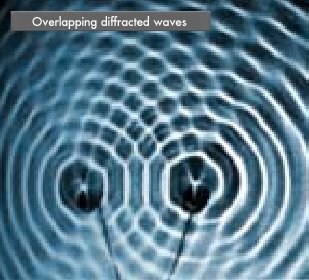
Testing to Confirm Light Interference
Dr. Thomas Young (1773-1829), an English physicist, confirmed through tests that light waves cause interference. Dr. Young used a screen to confirm the interference pattern consisting of bright fringes and dark fringes that resulted when light from one source was split into two light waves with the same wavelength, which were then made to overlap. Interfering in phase causes brightness, while interfering out of phase causes darkness. Two waves interfering with one another are called "coherent."
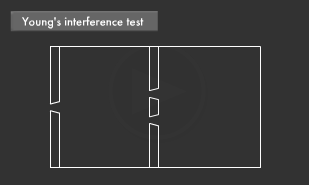
Waves that do not interfere in this way are "incoherent." Dr. Young used light from the same source, so he was able to reproduce a coherent state. With a soap bubble, there is interference between countless light waves, but the person creating the soap bubble may see the bubbles in an incoherent state, with no color at all. Incidentally, lasers emit coherent light.
You See Rainbows on Lenses and Greasy Surfaces
Coated lens surfaces and greasy water surfaces show us the colors of rainbows. This is because of light interference. Lens coating, using a thin, transparent film, is designed to decrease reflections while increasing transparent light. This film is designed by calculating the appropriate thickness and refractive index to ensure that light of a specific wavelength (the design wavelength) reflected from the surface of the film and light reflected from the border between the film and the glass interfere and neutralize one another. However, it is not always possible to guarantee zero-percent reflection of light with wavelengths different from the design wavelength. The eye therefore perceives these light waves as purplish reds and blues. Although the physical conditions are different, the colors you can see on a thin film of oil floating on a surface of water are also the result of mutually interfering light waves.
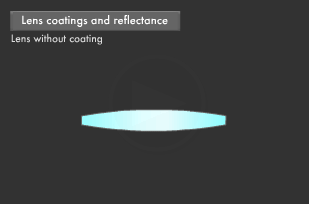
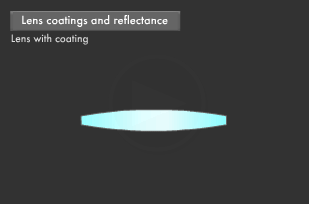
Holography Uses Diffraction and Interference
Holography uses light to create what seems like a three-dimensional image of an object. You often find some wonderful examples at art exhibitions and museums. Holography takes advantage of the diffraction and interference of light. There are several ways to create holograms, but the most common is using the laser, which generates coherent light.
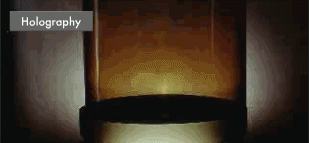
Holograms are created by dividing a laser beam in two using a beam splitter, illuminating an object with one of the divided beams, and simultaneously illuminating a dry photographic plate with the light reflected from the object (diffracted light) and the light from the second divided beam (reference light) at an angle. The diffracted and reference light interfere with one another to make an interference pattern. The recorded pattern is the hologram. When the hologram is illuminated using a laser at the same angle as the reference light, the pattern diffracts the laser light, reproducing the image. As shown in the image below, some kinds of hologram reproduce the actual image and the virtual image.
